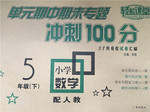题目内容

The King's School, Canterbury is an independent, co-educational secondary school. There are currently 791 pupils on the school roll(名单). The School has a long and distinguished history, and it is also one of the oldest charities in the country, providing scholarships to pupils and organizing a Charity of the Term.
The curriculum(课程)at King’s is based on strong academic roots. It emphasizes and relies upon what is best in traditional independent school education: scholarly excellence supported by a caring and tutorial system, and a wide-ranging co-curricular programme. However, it is continually adapting and reacting to the changing demands of modern education: new subjects are added, new teaching techniques adopted, and there is an increasing awareness of the need to provide programmes of study that match individual needs and skills.
The curriculum is divided into three units: the Lower School (Year 9), an introductory year; the Middle School (Years 10 and 11), working to GCSEs; and the Sixth Form ( Years 12 and 13), taking AS and A levels.
Full details can be found in: Shell Guide and Handbook; Middle School Academic Guide 2009-11; Middle School Academic Guide 2010-12; Sixth Form Guide 2009-11 and Sixth Form Guide 2010-12.
Formal and structured educational support, for those who need it, is available at all levels. The well-stocked Library is open 7 days and 6 evenings per week. ICT facilities (including the Internet) are available for all and the whole school (studies within the Houses as well as classrooms) is extensively networked.
Pupils are offered extensive careers advice throughout their time at King’s. Almost all go to university, either immediately or following a GAP year. The most popular university destinations are Cambridge, Bristol, Nottingham, Durham, Leeds, Oxford, Edinburgh, Manchester, and University College, London.
Director of Studies: Geoff Cocksworth: grc@kings-school.co.uk
Examinations Officer: Elaine McDowell: eam@kings-school.co.uk
【小题1】The passage serves as a brief introduction to __________.
| A.the King's School | B.the curriculum |
| C.the teaching plan | D.British education |
| A.The King's School, Canterbury is a famous high school in Britain. |
| B.The curriculum at King’sis best in traditional and modern education. |
| C.All pupils of the school go to university immediately after they graduate. |
| D.pupils’ dormitories as well as classrooms are provided with network |
| A.The King's School focuses on pupils’ individual development |
| B.pupils in the King's School who pass GCSEs will go to university |
| C.pupils in the King's School have an easy access to the school library |
| D.pupils in the King's School receive good education |
| A.handbook | B.website | C.guide | D.teaching plan |
【小题1】A
【小题2】C
【小题3】B
【小题4】B
解析

 品学双优卷系列答案
品学双优卷系列答案 小学期末冲刺100分系列答案
小学期末冲刺100分系列答案 期末复习检测系列答案
期末复习检测系列答案 超能学典单元期中期末专题冲刺100分系列答案
超能学典单元期中期末专题冲刺100分系列答案 黄冈360度定制密卷系列答案
黄冈360度定制密卷系列答案King Midas used to love gold. One day he met a fairy who allowed him to make a wish for something. The king replied at once , ‘‘I love gold . I want everything I touch to change into gold”. ‘‘Very well , tomorrow morning, everything you touch will turn into gold .”Saying this, the fairy disappeared.
The king waited excitedly till the next morning. To his joy ,everything he touched changed immediately into gold. ‘‘I’m the richest man in the world now.” He shouted. Soon Midas became hungry. He sat down at his table. All the foods and drinks turned into gold in his hand . ‘‘I’m dying of hunger.” He cried.
Soon Midas became hungry. He sat down at his table. All the foods and drinks turned into gold in his hand . ‘‘I’m dying of hunger.” He cried.
Just then his daughter came running in . ‘‘Why are you so sad , dad ?” she asked, putting her arms around him. There and then she became a golden statue. The king loved his daughter very much .Seeing this ,he began to cry. He looked up and suddenly saw the fairy before him. ‘‘Don’t you like the golden touch?” asked the fairy. ‘‘ Please take it away,” begged the king, ‘‘ give me back my daughter.” ‘‘Well, you have learned your lesson. Go and wash in the river. Then the golden touch will be gone.” The king ran quickly to the nearby river.
【小题1】The fairy allowed the king to make a wish because_____
| A.she hoped to make the king the richest in the world. |
| B.She loved gold too. |
| C.She wanted to teach the king a lesson. |
| D.She wanted to turn the king’s daughter into gold. |
A. excited B. hungry C. worried D happy
【小题3】The king’s daughter became a golden statue when _____
| A.she saw her father |
| B.the king went to meet her |
| C.she put her arms around her father |
| D.the king loved her very much |
| A.The king died in the river. |
| B.The king’s daughter changed back from gold to a lovely girl. |
| C.All the things the king had touched changed back into real ones. |
| D.Both B and C |
| A.Gold makes people unhappy. |
| B.More gold , more happiness. |
| C.Gold is not the thing that makes life happy. |
| D.People feel happy if they have not gold. |